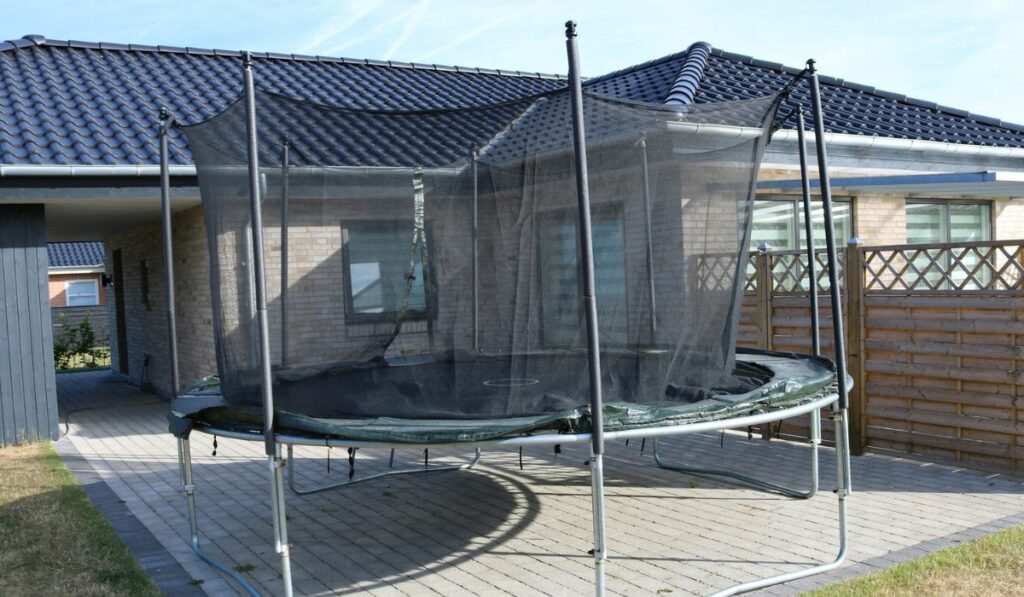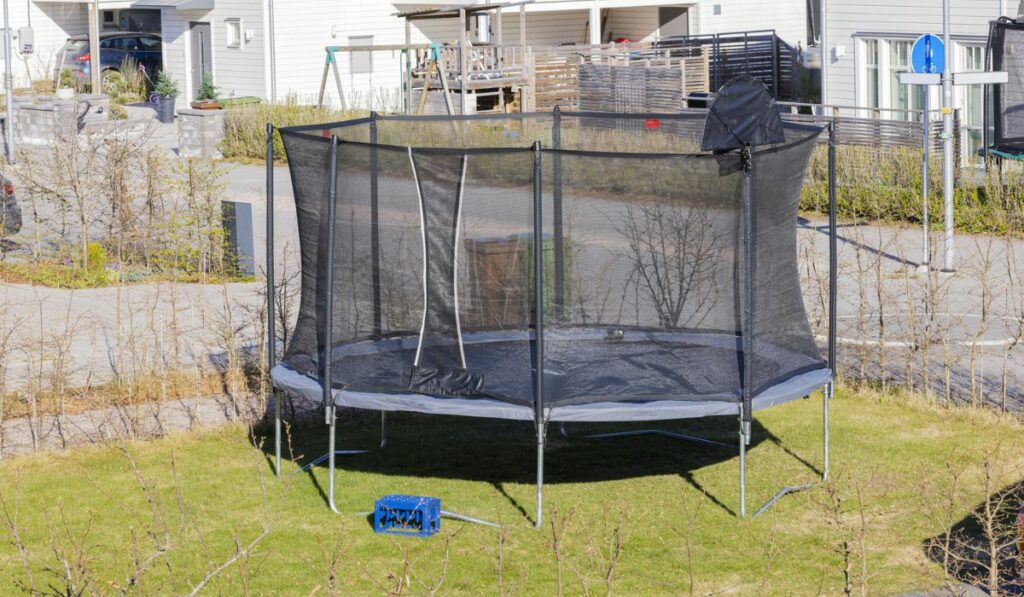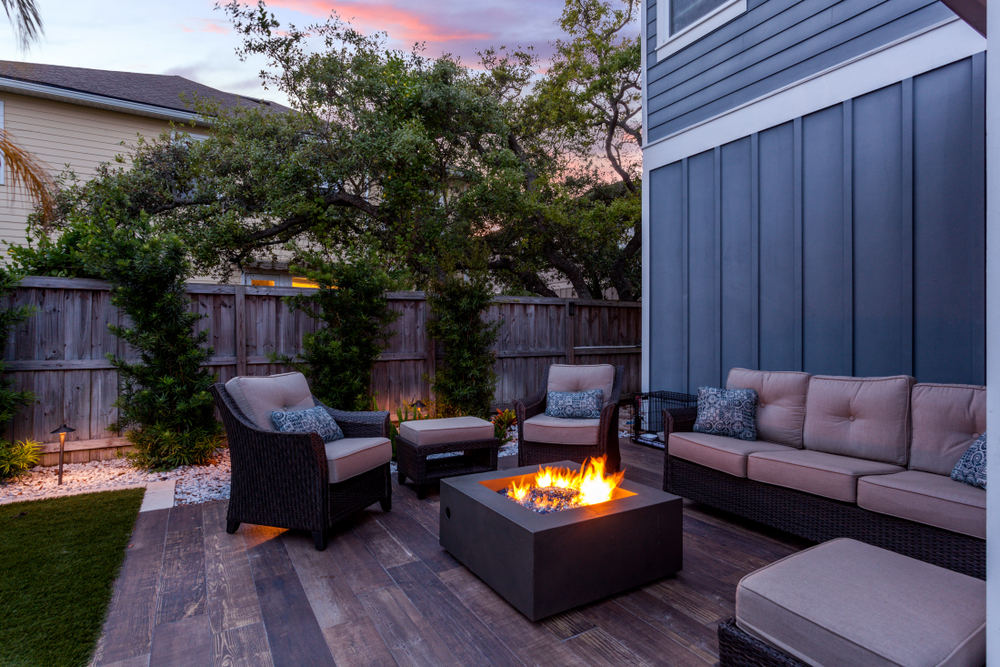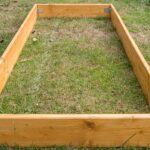Choosing the right-sized trampoline is vital if you want to keep your children entertained and maximize their jumping rate while preventing injuries. But what makes choosing the right one tough is that you don’t need to consider just the size; you also need to consider the shape, type, and use.
To choose the right trampoline size, consider the ages, the number of people jumping on it, and their weight. You should also keep in mind the space in your yard. In addition to the space the trampoline will take, you should also have 5 feet of clearance space around the trampoline.
So how do you determine which size of trampoline you need? Well, let’s take a look at all the factors you need to take into account and whether you should go for a square trampoline or a round one. We’ll also see the sizes most suitable for small, medium, and large yards.
How Do You Choose the Right Size Trampoline?

To choose the right size trampoline, there are a number of factors you need to consider. Let’s discuss those.
Ages of Those Who’ll be Jumping
You first need to consider the ages of those using the trampoline. Jumping on a giant trampoline is undoubtedly fun for kids, but it’s unsafe for children under six. The same goes for a regular trampoline measuring 9 feet or more.
Instead, an exercise trampoline that’s smaller than 7 feet is a much safer option. This is because children younger than six years don’t have complete control of their bodies and can easily hurt themselves if they get on a trampoline that’s too big for them.
Of course, jumping on an exercise trampoline is not as fun as jumping on a regular trampoline, but it can let your kid have some fun without the risk of injury. But if kids older than seven are going to be using the trampoline, then a regular one will do just fine.
Number of People Who’ll Use it
The second thing you need to consider is the number of people who’ll be jumping on the trampoline at the same time. The number of people will significantly affect the size you need.
For instance, if you have 6-7 people (both adults and kids) that’ll get on the trampoline simultaneously, a 12 foot trampoline may not be big enough. So something bigger, like a 13 or 14-foot trampoline, will be a more suitable option.
Weight of the People
As the number of people on the trampoline increases, so does the total weight that’ll be put on the jumping mat. So if you have 6-7 people, including two adults, you can easily expect 500 pounds of weight jumping on the mat.
So to choose the right size, get a rough idea of the total weight of everyone jumping on the trampoline and then look for options. Most units mention the maximum weight you can put on it (including the weight per jumper and the maximum weight), so make sure you choose accordingly.
Size of the Yard
The size of your yard is also crucial since you need to accommodate not just the trampoline but also the clearance space around it. Generally, there needs to be about 5 feet of space around all sides of the trampoline to provide sufficient space.
Not to mention, the yard must be level and free of fences, branches, and other similar obstructions. If you’re worried about grass dying underneath your trampoline, there are plenty of landscaping options to consider.
Your Budget
And finally, you can’t choose without considering your budget. Some more famous brands, like Vuly, have more expensive options, while others, like Skywalker, have more affordable trampolines. So make sure you know your budget before making the final choice.
Square vs. Round: Which is Best?
Trampolines are available in four shapes: square, round, oval, and rectangle. Round is the standard shape, and you’ll find that most trampolines are of this shape. Plus, it ensures a good bounce as well as safety.
Meanwhile, their rectangle counterparts are known for a higher bounce and are great for multiple people, especially if they want to do tricks such as flips without getting hurt because of the larger jumping space.
Though uncommon, oval trampolines have multiple “center” points, meaning multiple people can get a good bounce simultaneously. And finally, square trampolines have comparatively less bounce than others, but they’re safer for younger children.
You can find all these shapes in smaller and bigger sizes (even Olympic ones) to accommodate everyone jumping. However, the most common of these are round and square trampolines. So which one is better? Let’s make a quick comparison.
Bounce
A square trampoline provides more bounce than its round counterpart, but it’s not as bouncy as a rectangular unit. This is because, in a square trampoline, each spring works independently of the others, compared to a round trampoline, where all springs have to work to enable the jumper to bounce.
Considering the safety and bounce provided by the square shape, most people go for this one. Plus, the shape makes it easier to place in a yard with less wasted space, even if you leave 5 feet of space all around the trampoline.
Safety
The trampoline shape can significantly affect the safety of your kids or anyone jumping on the trampoline. However, the bounces are more controlled regarding round trampolines, making them safer than their square counterparts.
Plus, round trampolines are designed so the jumper automatically moves toward the center of the jumping mat, reducing the chances of falling off it. This is particularly important to consider if there’s no safety enclosure for your trampoline.
Cost
Round trampolines are generally cheaper than square ones since they need less material. Plus, they’re designed more efficiently, so there’s less wasted material. However, the price also depends on the quality of materials and the size.
Keep in mind that regardless of the shape, cheaper isn’t always better since some manufacturers opt for low-quality materials to reduce costs. So make sure you go through customer reviews before making the final choice.
Which One Should You Choose?
The final choice comes down to the use you have in mind. Generally, square trampolines are great if you want higher bounces, and they’re often the preferred choice of trampolinists and gymnasts. Meanwhile, round ones are cheaper, safer, and great for recreational use and even working out.
What Size Trampoline is Best for Smaller Yards?

The best option for small yards is an 8-10 foot trampoline. However, this size is only suitable for smaller children and small families.
Ideally, you should only have one child jumping on your 8 or 10 foot trampoline at any instance. Given the small space, two or more kids will only end up jumping into one another and eventually hurt themselves.
Plus, 8-foot trampolines are closer to the ground, so you can’t put a lot of weight on them. And while an 8-foot trampoline is better than no trampoline, it’s better to opt for a 10-foot one if you have the room and budget.
What Trampoline Size is Best for Medium-Sized Yards?
A 12 foot trampoline is the best option for a medium-sized yard and can accommodate two kids easily. It not only takes less space than a 14 or 15-foot trampoline, but it also offers more room to jump on.
What Size Trampoline is Best for Large Yards?
A 10×17 rectangular trampoline or a 14-15-foot round trampoline are best for large yards. They allow 3-4 kids to play together on it, and they have more springs than a small or medium trampoline, allowing kids to have a more enjoyable bouncing experience.
Are 10x17ft Trampolines Safe for Doing Flips?
While 10×17 foot trampolines are big enough for doing flips and other tricks safely, it all comes down to the quality of the product. A robust frame and a high-quality jumping mat are essential for a good bounce to execute the flip safely.
If you have a flimsy, low-quality trampoline, it’s best to avoid doing flips and other tricks.
How Many People Can Jump on a 10x17ft Trampoline?
Depending on the age and weight of the people jumping on it, you can fit around 3-4 average-sized kids. Generally, a 10×17 foot trampoline is good enough for general family use.








